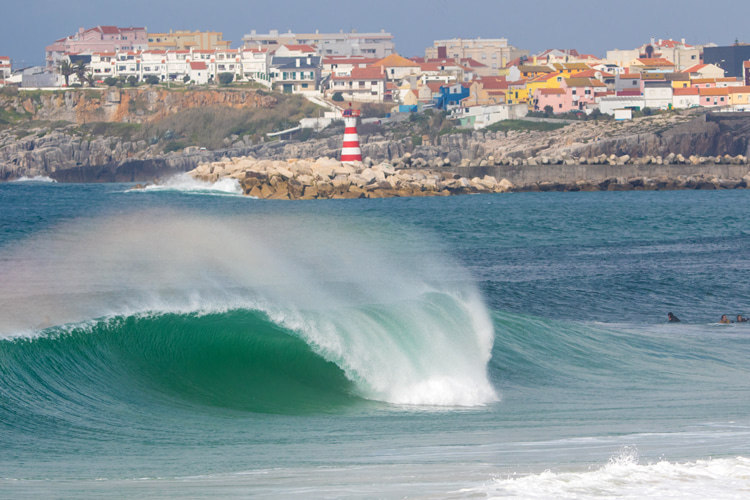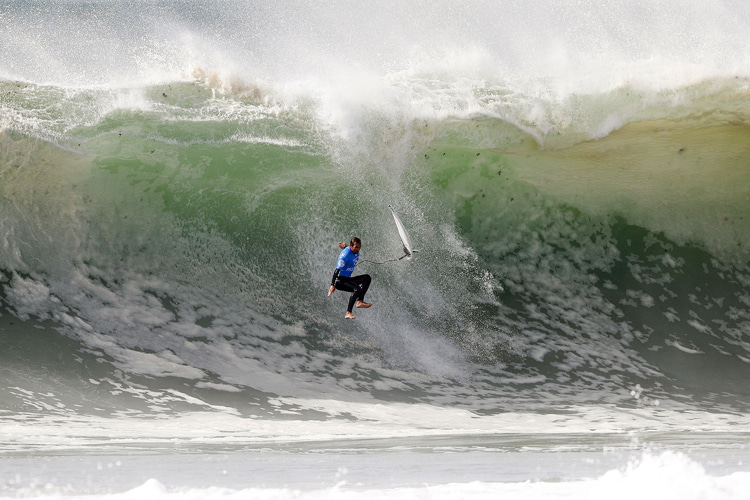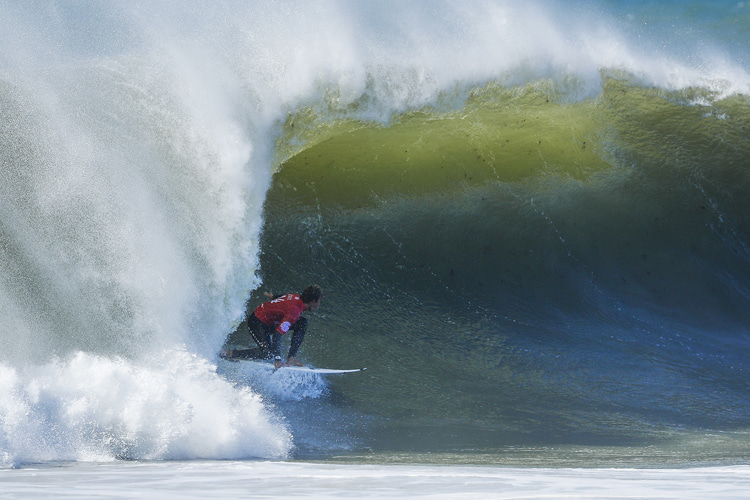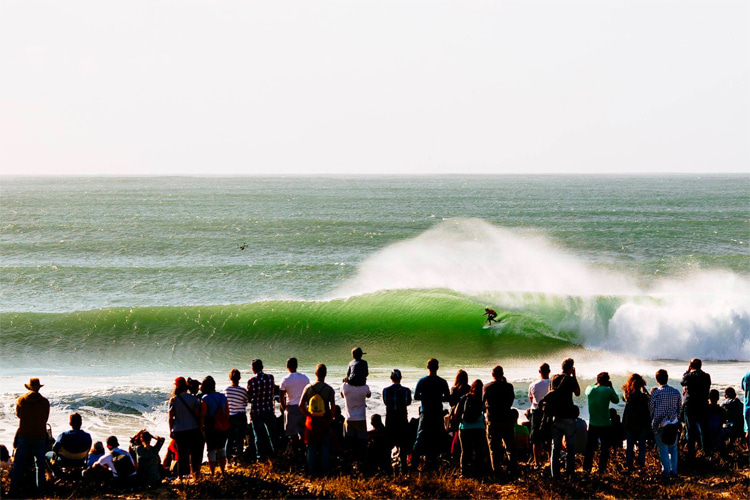Supertubos is a famous beach break located in the fishing town of Peniche, Portugal.
The surf spot is known for its long, fast, hollow, and deep barrels that detonate ferociously close to the beach.
It is often considered Europe's alternative to Hawaii's Banzai Pipeline but without the dangerous reef. It also reminds us of Mexico's Puerto Escondido.
Supertubos hosts the elite of competitive professional surfing every year.
The world-class barreling wave attracts thousands of traveling American, British, French, and Australian surfers all year round.
Peniche was once an island.
It now sits on a rocky outcrop connected to the mainland by a sand isthmus with beaches immediately north and south.
It is home to the finest world's best sardines you'll ever eat. They're rich in vitamins and minerals and help reduce the likelihood of developing Alzheimer's and cardiovascular diseases.
The town also hosts a 16th-century fortress, a former political prison during Portugal's dictatorship days (1933-1974).
"I remember going to Peniche in the 1970s and surfing Supertubos before it was even called Supertubos," Phil Jarratt reveals in the book "Surfing World."
"We camped near Molhe Leste [a short walk to the north of the break] and just surfed these epic waves all summer. It's one of my favorite places."

Commit or Die
Supertubos and Molhe Leste shine to life on the south side; Baleal, Lagide, and Pico da Mota invite beginners and intermediate surfers for a different ride on the north side.
The European barrel-riding machine can get crowded on good days, and locals often impose their knowledge of the peak to snag the best rides.
Your fellow surfers will note the slightest hesitation and the smallest mistake in the lineup, meaning fewer chances of catching another wave.
Patience is a virtue in order to experience a unique, magical wave.
Supertubos is a highly demanding wave.
It requires confidence, total commitment, and skills to embrace a steep drop and set a near-perfect surf line.
Observation and careful analysis prior to paddling out is recommended. The tight take-off zones transform the lineup into a tense arena of constant positioning.
If you're lucky to lock into a dredging liquid cavern and negotiate a safe exit, you have reasons to celebrate, as some tubes will close out unexpectedly.

Fueled by Canyons
But how can a beach break produce perfectly tubular waves?
The shifty, compact, and extremely sensitive sandbank is shallow and will behave differently as the tide goes in or out.
Local bathymetry also plays a critical role in creating what Supertubos is today, while offshore winds put the finishing touch on this beautiful cylinder wave.
Let's not forget that Peniche's Supertubos beach lies just 25 miles (40 kilometers) southwest of another surfing heaven - Nazaré's Praia do Norte - and 25 miles north of Ericeira's Ribeira d'Ilhas.
That is to say that both breaks get the most out of the long-period North Atlantic groundswells that often light up this stretch of Portuguese coastline.
Nazaré and Peniche also share the underwater canyon that funnels wave energy toward the shore.
The Portuguese Pipeline can be surfed in all tide conditions but works best on the mid-to-high tide, with W swells and light NE wind.
The best wave size is double overhead. When it gets bigger, it starts closing out and breaking several surfboards per minute.
The alternative is the right-hand point break immediately south: Consolação Beach.

A Super-Fast Barreling Wave
Supertubos - not to be confused with Jeffrey's Bay Supertubes - is not a forgiving wave. It is heavy, scary, and for advanced surfers only.
The A-frame peak often allows you to go both ways, even though the long left-hander made it famous worldwide. The right-hander is a shorter yet intense experience.
And it's not all about the tube - plenty of open wave faces and ramps will invite you to go for barrel-to-air combos.
The best time of the year to surf Supertubos is from September through November, i.e., during fall.
Remember to bring a 3/2 mm or a 4/3 mm wetsuit.
If you're a tube rider, bring at least a couple of higher-volume shortboards with thruster or quad-fin setups. You'll need speed for paddling into the wave and accelerating inside the barrel.
Remember that Supertubos is one of the heaviest waves in the Old Continent.
Supertubos, Peniche, Portugal | ID and X-Ray
Location: Praia de Supertubos, Peniche
Type of Wave: Left-Hand Beach Break
Length: Up to 55 yards (55 meters)
Best Swell Direction: SW-NW
Best Wave Size: 6-12 Feet
Best Wind Direction: NE, E
Best Tide: Mid-to-High Tide
Best Time to Surf: Fall (September-November)
Skill Level: Advanced to Professional
Best Board: Shortboard and Bodyboard
Crowd: Mostly Crowded
Water Quality: Good
Hazards: Localism, Pitching Take-Off, Close-Outs, and Compacted Sandbank
Bottom: Sand
Water Temperature: 56-66 °F (13-18 °C)
Getting There: Car, Beach, and Channel
